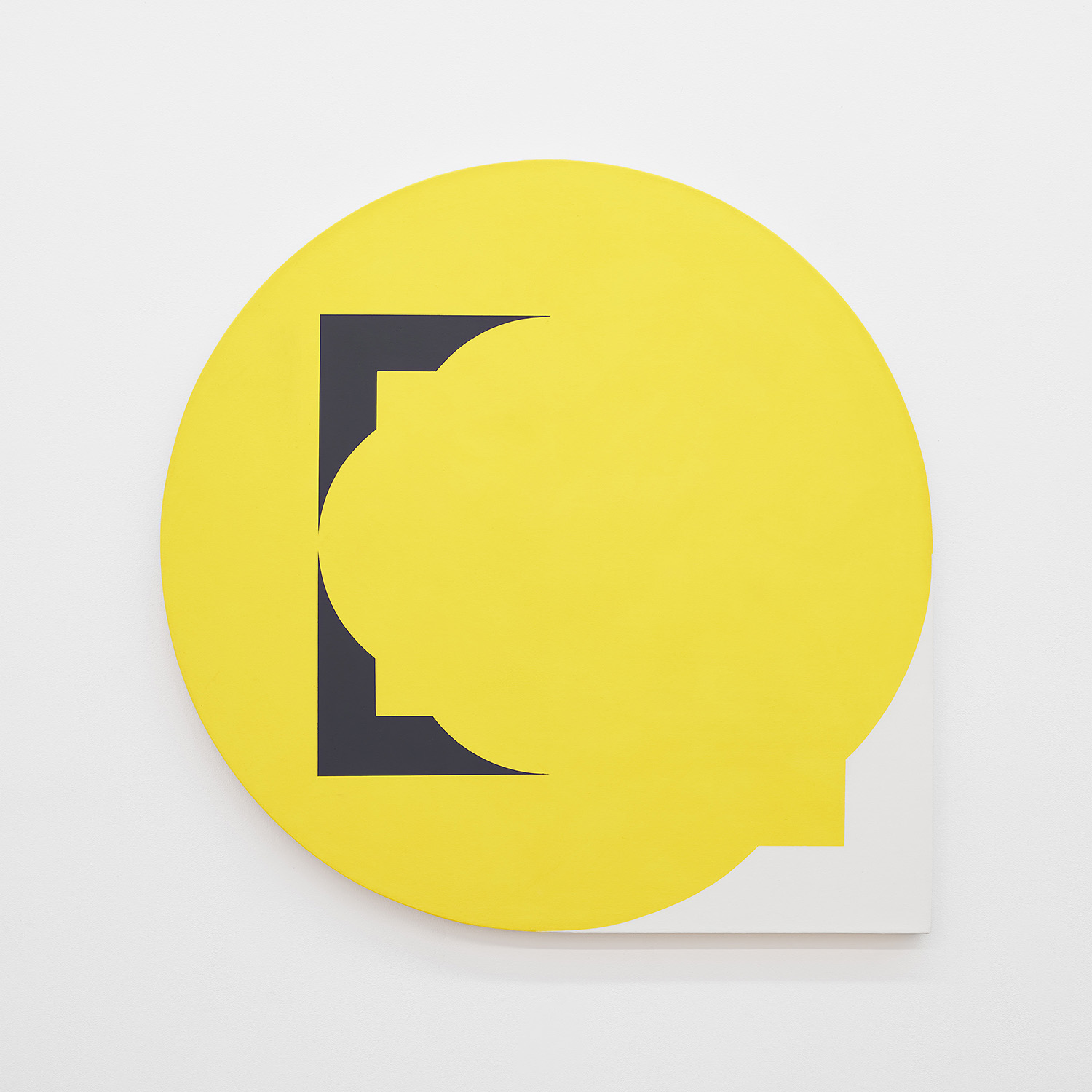Bob Hooper
All Parts Are Both
January 15 - February 27
All Parts Are Both
January 15 - February 27

There is nothing obvious about Bob Hooper’s paintings. There are motifs repeated within and across his delicately sparse grounds, but rather than aide toward resolution, these repetitions do more to establish each painting’s quietly troublesome nature. Hooper deals in hybrids and conflicts in such a way that hybridity becomes a condition in which conflicting forms seek compromises that get nearer but never fully arrive. The clearest example is in his use of what he calls the circle-square, which defines the contours of many of his recent shaped canvases. The circle-square is precisely that: a single form that equally combines a circle and a square. Originally, this shape was conjured within another painting as a means of abstracting how someone might perceive the height and depth of an architectural interior. Starting as a way to represent something about space, the circle-square has evolved into its own kind of spatial entity where the perceived and the imagined penetrate one another. The circle-square also exerts itself as a vehicle for color within Hooper’s imbalanced pictorial spaces, alongside other shapes and fragments of quatrefoils, a traditional design element comprising overlapping circles and squares. In these paintings, the quatrefoils are never complete although segments often come close to fully connecting only to then reveal themselves as parts from slightly differently shaped quatrefoils that could never actually create a whole. These objects are either found drifting apart or together in a solid field of white or yellow, or working in collaboration with a layer of painterly interference that Hooper calls scrims. Cloudy or bubbly, the scrims conceal sections of background layers and disturb what might otherwise be perfect symmetry between compositional components, emerging as other spaces that are either oblivious to their impact or intentionally operating as disruptive misfits. Much like his other shapes and fragments, the scrims seem to be simultaneously putting each painting together and taking it apart, but they aren’t choosing between order and disorder, they are choosing both in the same place at the same time. All of this builds toward a slow, confounding tension that expands out into the space the paintings co-occupy with the viewer. For Hooper, each painting is developed with an eye toward viewership as the moment his works become complete, launching them into a broader, temporal dimension of engagement; a state of sustained immediacy. Ultimately, the paintings in All Parts Are Both create a circuit of phenomena that subtly rearticulates itself as novel experiences while we move in, out, and between.
This is the first solo exhibition in Chicago for the longtime Chicagoland resident, and the first time his work has been shown in the city since 1997. Hooper holds an MFA in painting from Yale University and a BFA from Pratt Institute. In addition to teaching and exhibiting throughout the United States and Europe, Hooper has also been the recipient of a Guggenheim Fellowship for Creative Arts, a Rome Prize Fellowship in Painting from the American Academy in Rome, and a grant from the Pollock/Krasner Foundation.
Press:
Artforum
Newcity
Esthetic Lens